Where oh where have the Buffalypso gone? (video)
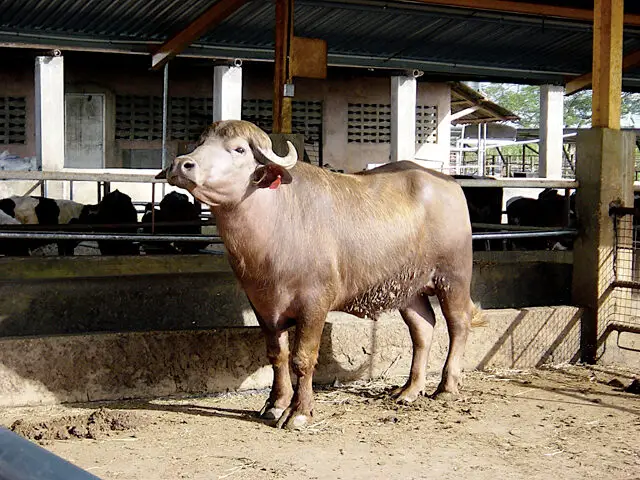
If, like me, you were a TTT baby (i.e. you grew up only knowing one channel that signed off at noon, and signed back at 2:30 p.m. with the call of “Caribbean Vibration”) then you probably also remember government promos touting the benefits of the mysterious locally-designed ‘Buffalypso’. Part Water Buffalo and part uh… Calypso? this breed, national dispatches said, would fill a gap in local domestic meat supplies. Full of wonderous characteristics it would provide nutritional value for consumers and sustainable profits for farmers. It all sounded well and good… except that the influx never took place.
To date I have never seen buffalypso on sale in the meat section.
Have you?
Trek to the Eastern coasts of Trinidad and you’ll see herders of water buffalo languidly moving along the shore. Cattle that one is sure is being bred for sale. But to whom? And where?
Where oh where have the Buffalypso gone?
Maybe to understand that question we need to first take a look at how the buffalypso emerged onto the shores of Trinidad…
The Buffalypso breed was developed through a selective breeding program by veterinarian Steve Bennett in Trinidad.
A selection and improvement programme for a meat type animal began in 1950 with a breeding programme designed to straighten the top line and broaden the loin and rump.
By 1964 Dr. Steve Bennet was satisfied that the animals in the meat improvement programme had changed sufficiently to warrant a new name. Buffalypso therefore was coined from Buffalo and Calypso the indigenous music of Trinidad and Tobago.
Buffalypso were bred from the following riverine breeds of the Indian sub-continent: Murrah, Jafarabadi, Nili-Ravi, Surti, and Nagpuri. They are docile domesticated livestock that are useful for milk, meat, and draft.
From the Ministry of Food Production, Land and Marine Affairs:
Taste tests conducted by the St. Augustine campus of the University of the West Indies showed that buffalypso meat rated higher in terms of acceptability for colour, taste, texture and fat content than comparative prime cuts of beef.
THE FUTURE
The buffalypso represents a “genetic goldmine” for Trinidad and Tobago which is free of the major livestock diseases that can limit international trade.
During the past 26 years Trinidad and Tobago has exported a significant amount of buffalypso breeding stock to Barbados, Belize, Cayenne, Cuba, Colombia, Costa Rica, Ecuador, Guatemala, Guyana, Honduras, Panama, Suriname, The United States of America and Venezuela.
Efforts are currently underway in Trinidad and Tobago to more fully exploit the meat and milk producing potential of these animals.
THE MILK
Water buffalo milk is white and has a much higher butterfat and total solids content than cow’s milk. Buffalo milk is used almost exclusively for making mozzarella cheese in Italy, while the South Americans produce “Queso Blanco” and “Queso de Mano”
Recent newspaper articles have suggested that more governmental attention is going to be paid to developing buffalypso as a domestic product, both for its meat and its milk. However, I’ve been hearing this for decades. What do you think? (If you are not a vegetarian), would you eat buffalypso? Have you already?
[poll id=”6″]
In closing, I leave you a video clip of “After Half-Past Nine” a classic track (c. 1989) from one of my local favourite groups jointpop. I’ve picked this video as it is one of the only clips I can think of that features footage of the herds of water buffalo that can be seen on the East Coast.
TOP 5 BEEF RECIPES (that could easily utilise Buffalypso) ON TRINIGOURMET
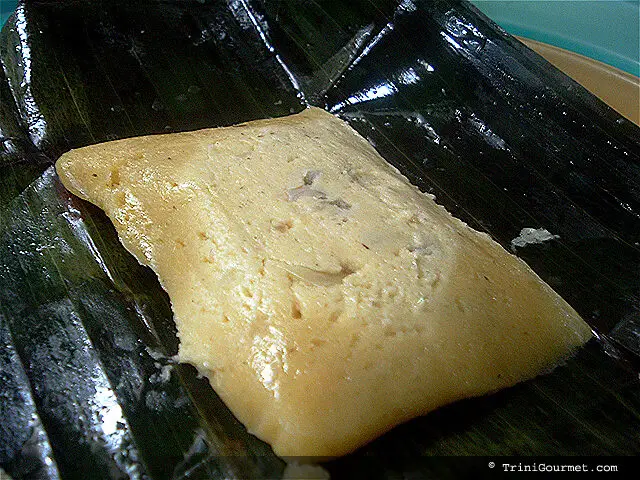
|
1. Trinidad Beef Pastelles (recipe)
One of Trinidad’s seasonal delights, pastelles are a steamed cornmeal pie wrapped in banana leaves and filled with stewed meat, olives, and raisins. |
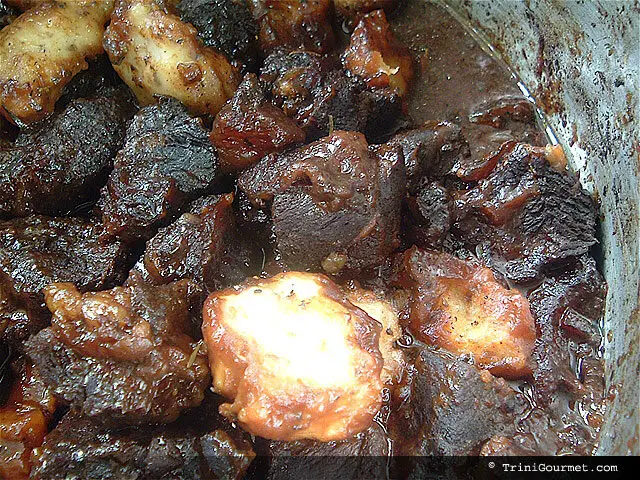
|
2. Trinidad Stew Beef with Herbed Dumplings (recipe) This recipe exemplifies the multicultural fusion nature of Trinidadian cooking. From the African influence of initially caramelizing the meat, to the European addition of beer, to the presence of Asian soy sauce |
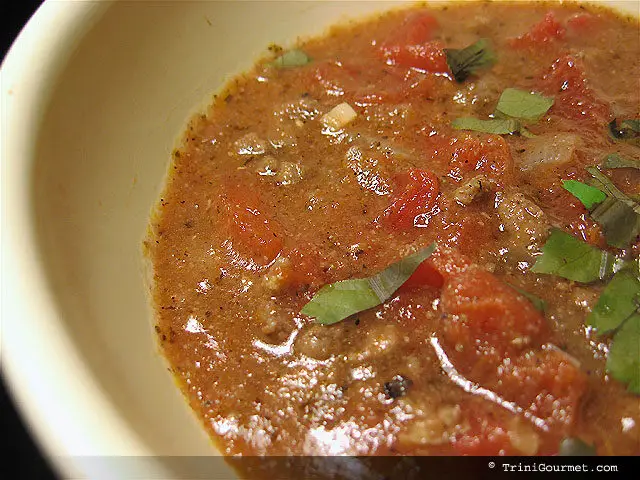
|
3. Tyler’s Texas Chili (recipe) This hearty chili combines beef chuck with Mexican chocolate. An unexpected yet traditional combination. For kosher adherents, make sure to use pareve chocolate or to replace the meat with a ground soy substitute 🙂 |
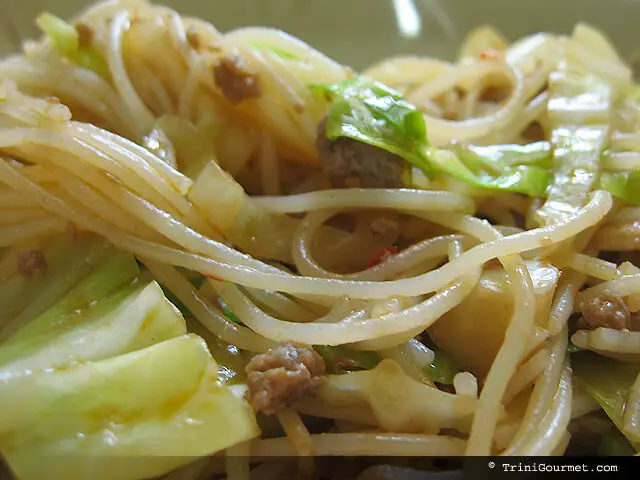
|
4. Ants In A Tree (recipe) Much like Trinidad Singapore has been a melting pot of cultures, and these influences are reflected in the local cuisine. This particular dish, Ants in a Tree, gets its name cos the ground meat separates to resemble ants, against the cellophane noodles. |
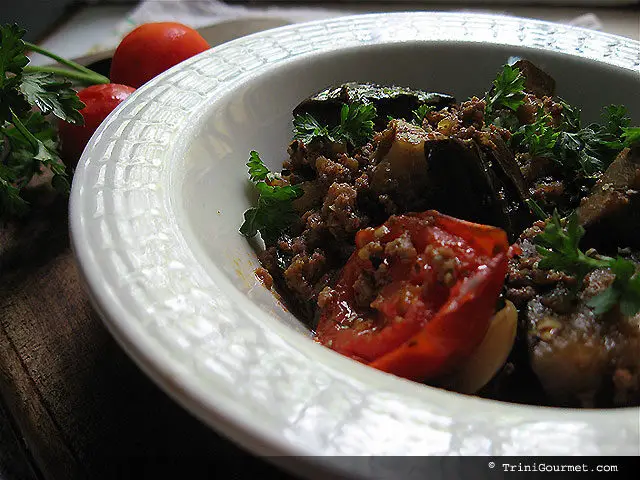
|
5. Eggplant Ragout with Tomatoes, Peppers and Ground Beef (recipe)
This dish is redolent with the flavours of the Middle East and is a personal favourite of mine. |
And, if you want even more ideas. Here are 4 Beef Intensive Cookbooks, picked for your enjoyment 🙂
|
1. The Healthy Beef Cookbook: Steaks, Salads, Stir-fry, and More – Over 130 Luscious Lean Beef Recipes for Every Occasion Brought to you by the American Dietetic Association and the National Cattlemen’s Beef Association, supported by the Cattlemen’s Beef Board, The Healthy Beef Cookbook shows health-conscious cooks exciting new ways to use lean beef in everything from quick and easy suppers to special occasion entrées. From great grilling recipes and sensational salads to hearty sandwiches, soups, stews, and one-dish meals, this full-color cookbook shows you special preparation and cooking techniques to create tender, moist, flavorful dishes every time. |
|
|
3. Williams-Sonoma Mastering: Beef & Veal: made easy with step-by-step photographs Williams-Sonoma Mastering Beef & Veal is a complete cooking course in single volume. The opening describes the different cuts of beef and veal, how to buy them, and how to trim them. You will also learn how to cook, season, and serve beef and veal, from readying your mise en place to expertly carving a bone-in roast. |
|
|
4. Jerky: Make Your Own Delicious Jerky and Jerky Dishes Using Beef, Venison, Fish, or Fowl A guide to making the popular high-protein, low-fat dried meat snack. |
